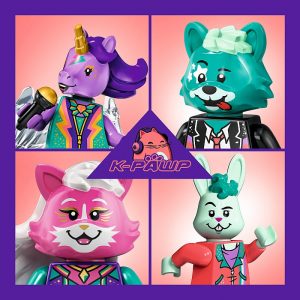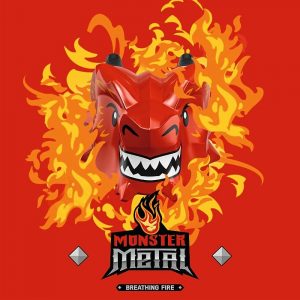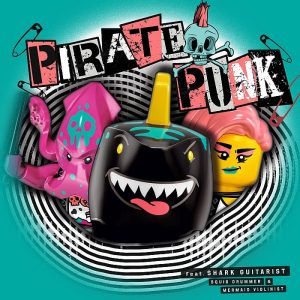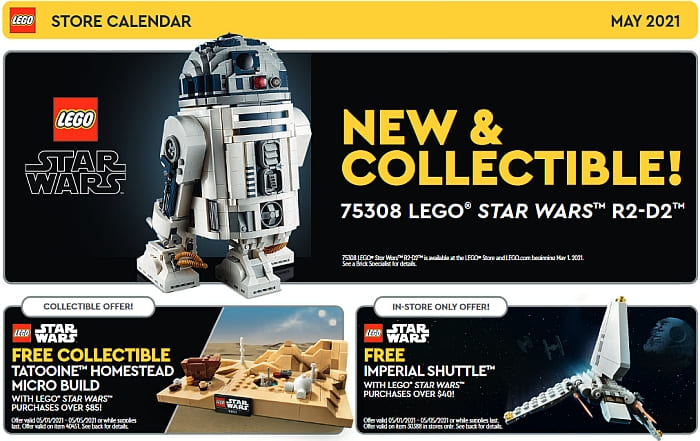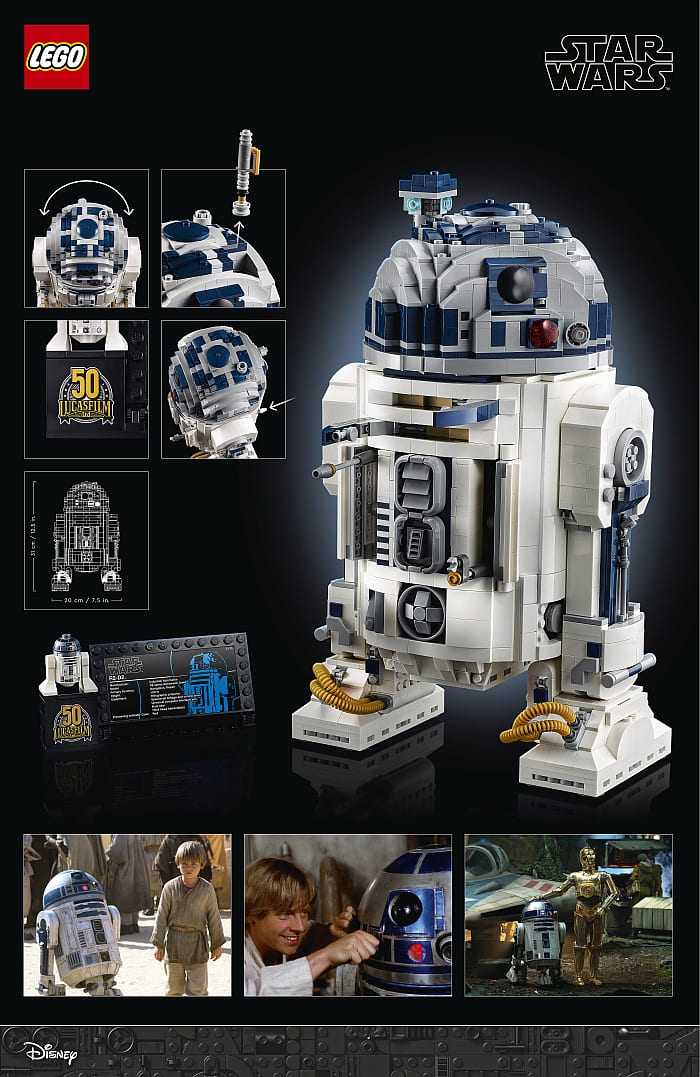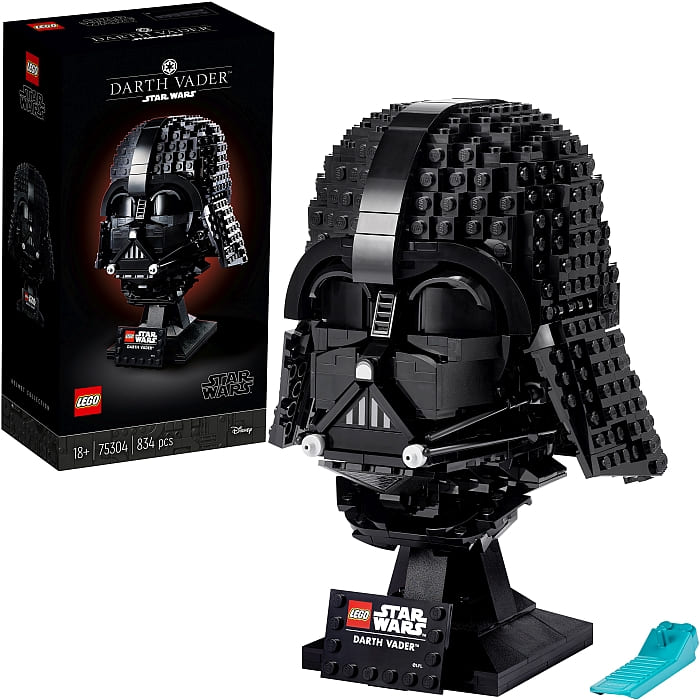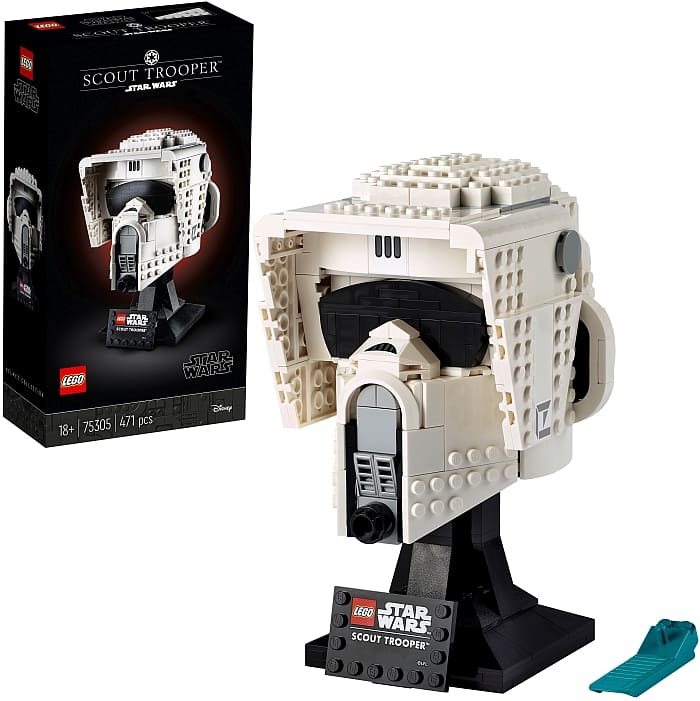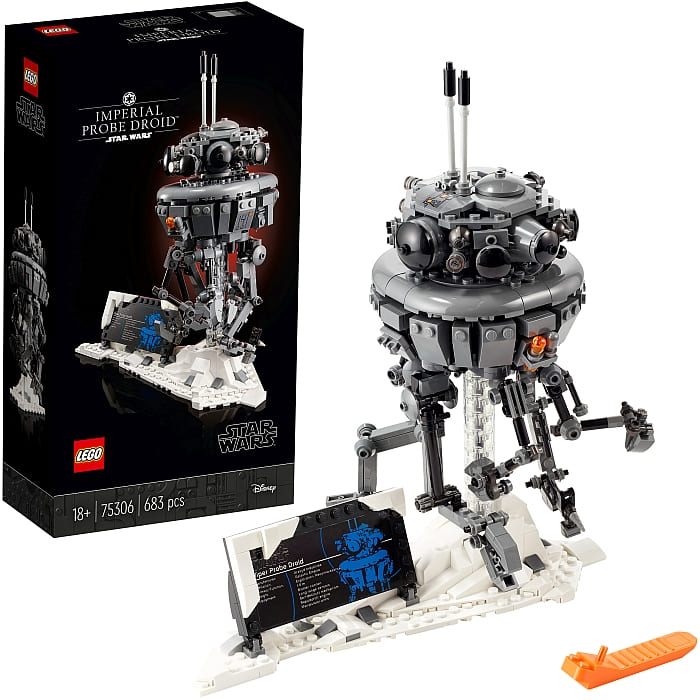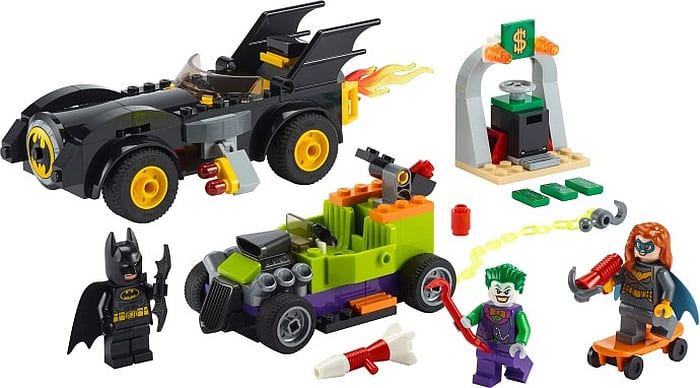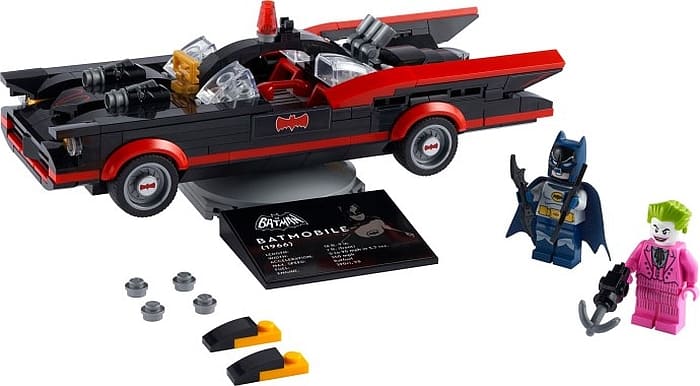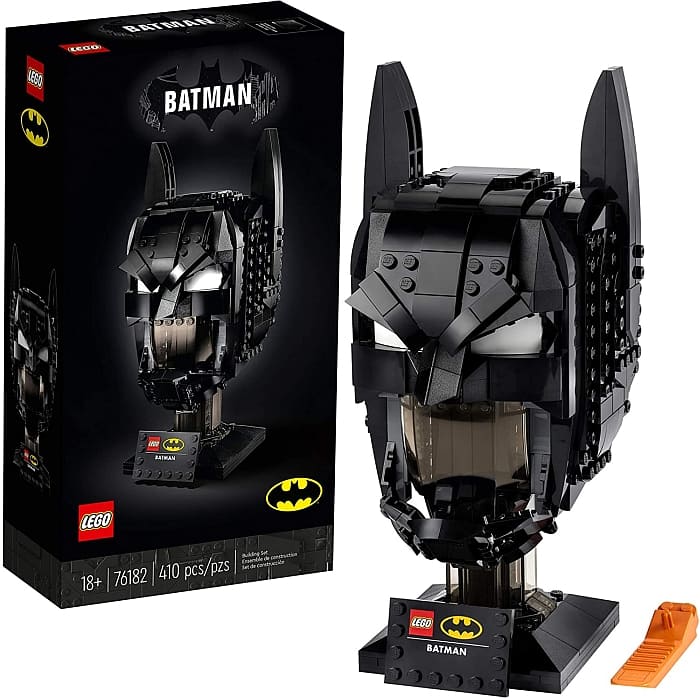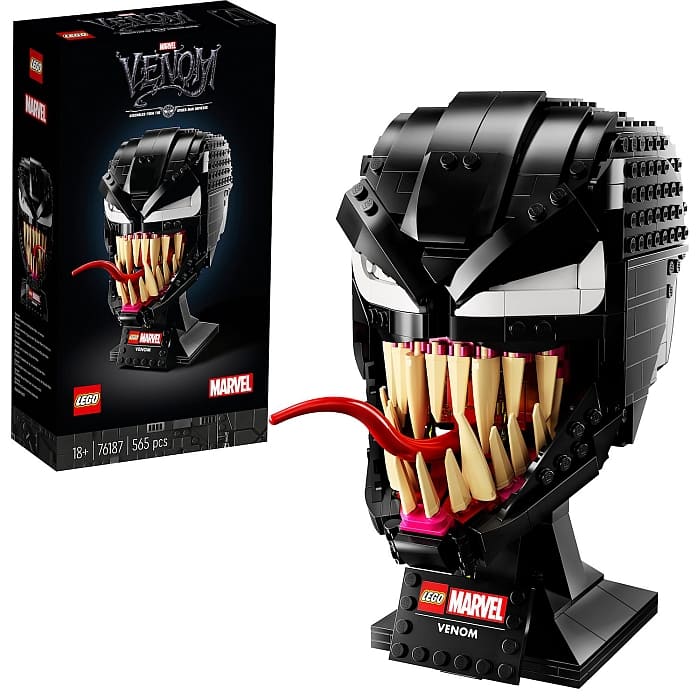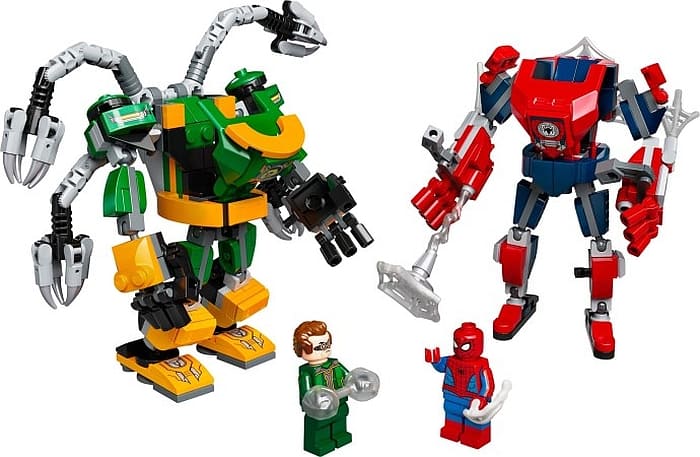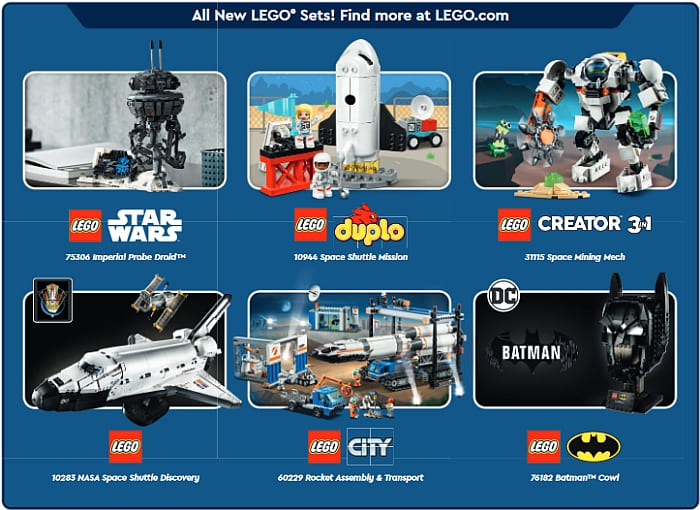A few days ago, the LEGO Group and Universal Music Group (UMG) unveiled eight exciting new LEGO VIDIYO sets, including two BeatBoxes, twelve more Bandmates, and five unique LEGO VIDIYO Stage Models. The stage settings are particularly interesting, as they offer actual building experiences in the LEGO VIDIYO collection, instead of just groovy minifigs that interact with the app. Below is the press-release with more info.
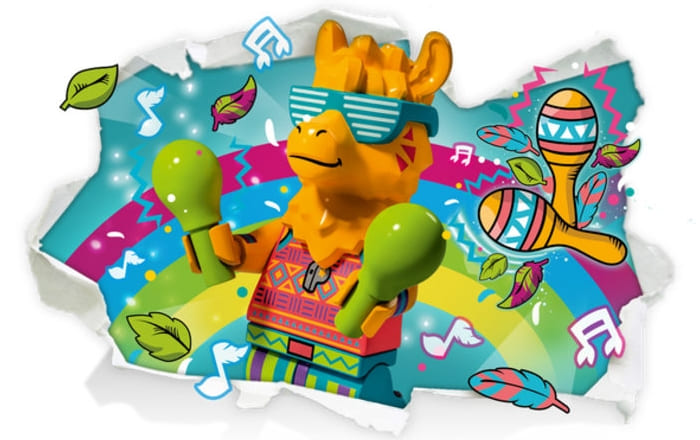
Launched in January 2021, LEGO VIDIYO is a playful music video maker experience designed to help children unleash their creativity. A brand-new AR enabled play theme that allows children to dream big by directing, producing and sharing their own music videos, using tracks from UMG’s unrivalled artists across the globe.
BRICK-BUILT LEGO VIDIYO STAGE MODELS
Adding to the excitement of today’s announcement are five Stage Models that accompany various BeatBox genres: a Candy Castle Stage, Robo HipHop Car, K-Pawp Concert, Punk Pirate Ship, and last but not least, The Boombox that opens up to reveal a stage setup that’s perfect for flashy performances and on-the-go fun as any classic boombox. Each Stage Model not only gives kids a brick built background but unlocks exciting digital backgrounds and speakers that you can customize in your music videos.
Speaking about these sets, LEGO Design Manager Ross Christopher Haynes says: “We’re thrilled to be unveiling these fantastic Stage Models as part of the LEGO VIDIYO line-up because they demonstrate the harmony between physical LEGO building and digital play. Not only are they fun to build and play with, with the minifigure band members, but they also serve as ideal backgrounds to add extra flair to kids’ videos!”
EXCITING NEW LEGO VIDIYO BEATBOXES
With this second drop, fans are introduced to two new BeatBoxes – Metal Dragon and Folk Fairy – each of which contains a minifigure representing the musical genre, a scanning-stage, two special BeatBits (which are unique to the specific BeatBox), and 14 randomly-assigned BeatBits.
Not only can children create exciting new music videos with the new BeatBoxes, but they can also add the characters into their existing bands or create new bands with any combination of characters from the eight BeatBoxes – who says you can’t have a Monster Metal band with a Pirate Punk guitarist and Fairy Folk singers? Everything is possible with a little imagination, and the new BeatBoxes open up even more opportunities to get creative with a wider range of outfits and styling, album covers, audio-visual effects, and dance moves!
FUNKY LEGO VIDIYO BANDMATES
Also joining the line-up are twelve fun and funky new Bandmates, each of which comes with one unique BeatBit as well as two randomly selected BeatBits. Each BeatBit offers a new way for kids to customize their videos by adding surprising and unique twists – from Alien Plants to Acoustic Guitar sounds and even some Dancing Flamingos. The possibilities are endless, and no two videos will end up the same!
With the addition of these Stage Models, BeatBoxes, and Bandmates there are now 134 unique BeatBit effects that kids can add to their collection in order to make the most epic music videos they can imagine and dream up. The full list of BeatBoxes, Bandmates, and Stage Models introduced to the world today include:
#43108 LEGO VIDIYO Bandmates Second Wave with Zombie Dancer, DJ Beatbox, Slime Singer, DJ Captain, Alien Dancer, Karaoke Mermaid, Dragon Guitarist, Vampire Bassist, Puppy Singer, DJ Rasp-Beary, Discowgirl Guitarist, and Carnival Dancer. – (4.99 EUR/USD each)
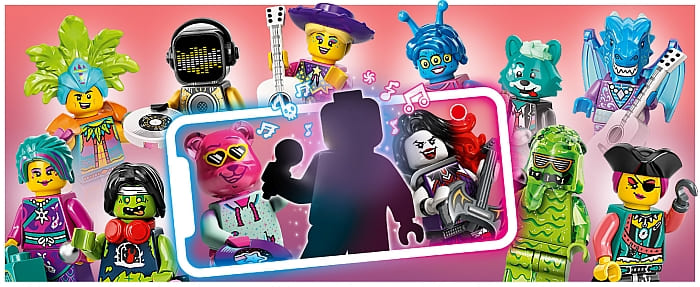
#43109 LEGO VIDIYO Metal Dragon BeatBox including a dragon singer minifigure, 14 random BeatBits and 2 special BeatBits (Monster Organ sound and burning Lava effects). The BeatBox is portable for fun on the move and can be decorated using the LEGO pieces. Styles include a castle, dragon head, and microphone – or any design of own choice! Special effect BeatBits like the rock opera sound effect and exciting fire visuals come alive once scanned in the app, just like in a real heavy metal concert. Measures over 8 cm high, 7 cm long, and 11 cm wide. – (19.99 EUR/USD)

#43110 LEGO VIDIYO Folk Fairy BeatBox including a fairy minifigure, 14 random BeatBits and 2 special BeatBits (a magic spell Beatbit effect that transforms bandmates into random objects and magic forest scene BeatBit). The BeatBox is portable for fun on the move and can be decorated using the LEGO pieces. Styles include fairy wings, a flower, or violin design – or any design of own choice! Special effect BeatBits include a magic spell, which changes items into random objects and a fantasy world effect to make a magic forest appear in the scene. Measures over 8 cm high, 7 cm long, and 9 cm wide. – (19.99 EUR/USD)
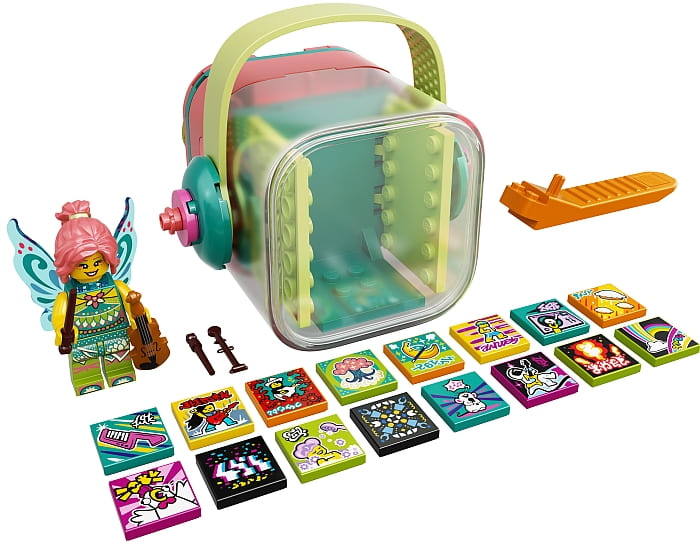
#43111 LEGO VIDIYO Candy Castle Stage including 2 minifigures (Candy Ballerina and Blue-beary Guitarist) with accessories, 14 random BeatBits and 2 special BeatBits (carousel horses and top hat & cane dance). Make changes to the real-life LEGO model to change the scenery in your VIDIYO music videos – like switching the heads to create a digital ice cream forest or chocolate canyon background. Measures over 13 cm high, 14 cm long, and 17 cm wide. – (29.99 EUR/USD)

#43112 LEGO VIDIYO Robo HipHop Car including 2 minifigures (Sing Bot and Bass Bot) with accessories, 14 random BeatBits and 2 special BeatBits (robot sounds and graffiti artwork). Make changes to the real-life LEGO model to change the scenery in your VIDIYO music videos – like switching the heads to create a digital high-tech garage or graffiti car park background. Measures over 8 cm high, 18 cm long, and 12 cm wide. – (29.99 EUR/USD)

#43113 LEGO VIDIYO K-Pawp Concert including 3 minifigures (Bunny Guitarist, Kitten Keytaris, and Flying Unicorn Singer) with musical accessories, 14 random BeatBits and 3 special BeatBits (matching costumes, black and pink filter and K-Pop dance poses). Make changes to the real-life LEGO model to change the scenery in your VIDIYO music videos – like switching the unicorn head for a cathead to see the video backgrounds change. Measures over 13 cm high, 14 cm long, and 30 cm wide. – (49.99 EUR/USD)
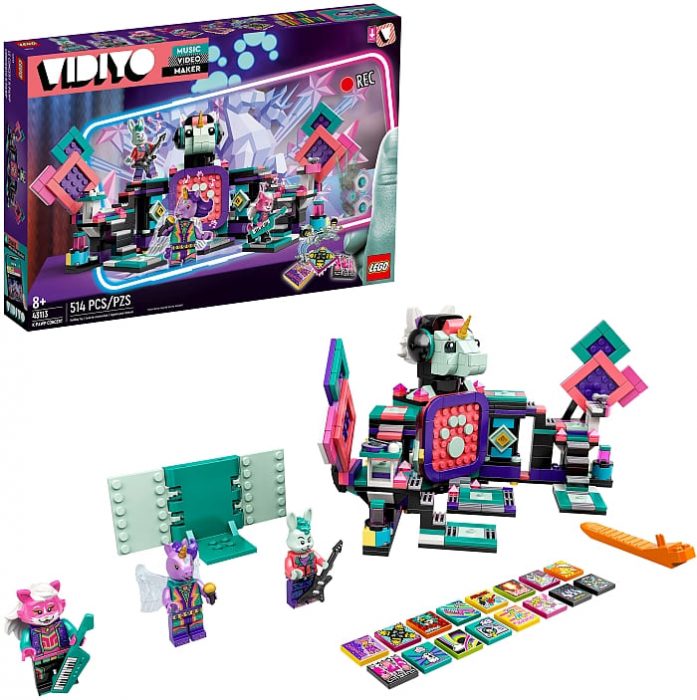
#43114 LEGO VIDIYO Punk Pirate Ship including 3 minifigures (Squid Drummer, Shark Guitarist, and Mermaid Violinist) with musical accessories, 14 random BeatBits and 3 special BeatBits (surf on a shark, cannon salute and pirate dancing). Make changes to the real-life LEGO model to change the scenery in your VIDIYO music videos – like swapping the skull head for a shark head or changing the treasure chest speakers to cannons. Measures over 19 cm high, 24 cm long, and 18 cm wide. – (59.99 EUR/USD)
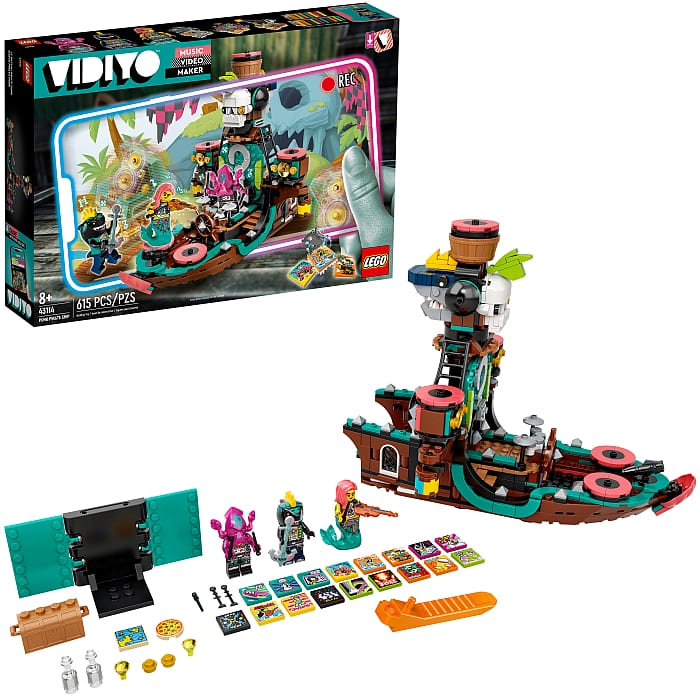
#43115 LEGO VIDIYO The Boombox including 4 minifigures (Alien Singer, Leopard Guitarist, Fairy Singer, and Vampire Guitarist) with musical accessories, 14 random BeatBits and 4 special BeatBits (motorbike, magical fire, neon paint costume and synthwave style music). Make changes to the real-life LEGO model to change the scenery in your VIDIYO music videos with a choice of 4 different heads, speakers and lights, each inspired by a different music genre. The life-size Boombox model transforms into the biggest VIDIYO stage, measuring over 16 cm high, 23 cm long, and 35 cm wide. – (99.99 EUR/USD)
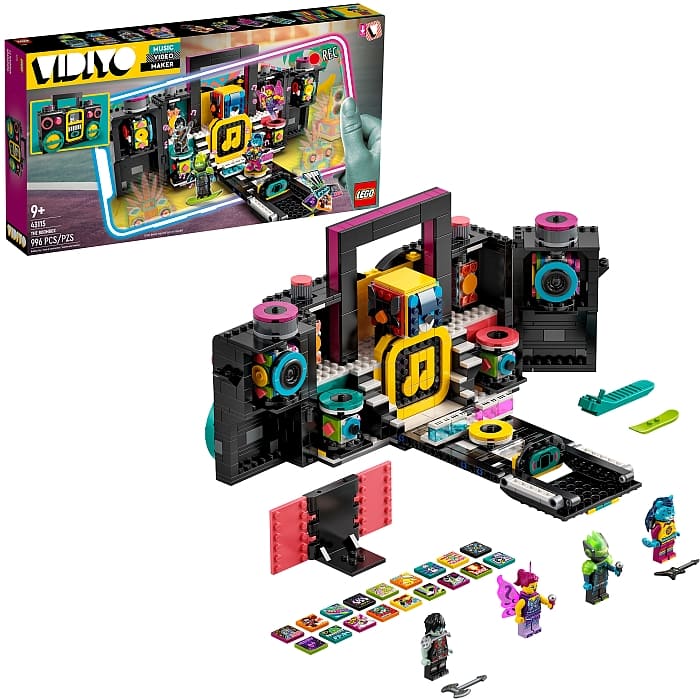
The newly introduced BeatBoxes, and Stage Models will be available from June 1st globally except the United States, where they will be available from August 1st. The new Bandmates will be available from October 1st globally. You can check out the full selection at the LEGO VIDIYO section of the Online LEGO Shop.

LEGO VIDIYO pulls together physical LEGO elements, music tracks and augmented reality to expand children’s creativity through play and music. Each product is designed to be played with alongside the free VIDIYO app, giving kids the tools to direct, produce and star in their own music videos. The initial launch offered six BeatBoxes covering a range of musical genres and 12 Bandmates with a variety of BeatBit effects. This latest product news introduces even more opportunities for kids to unlock their creativity with VIDIYO’s totally interchangeable system that now boasts a total of eight unique BeatBoxes, 18 Bandmates and 46 unique VIDIYO characters that kids can bring to life with the smashing selection of 134 BeatBit effects – Horse Carousel, Monster Organ, Magic Spell and Trapped in Jelly to name just some of the new BeatBits.
In February, Universal Music Group’s Astralwerks label and the LEGO Group teamed up to introduce L.L.A.M.A to the world. L.L.A.M.A, whose name is an acronym for Love, Laughter And Music Always, is the first artist to release a song via VIDIYO, the infectious “Shake,” which features three-time GRAMMY winner NE-YO and newcomer Carmen DeLeon.
Along with the new products being announced today, UMG continuously updates and adds tracks, featuring its unrivalled artists across the globe, to the VIDIYO app. Each song has been programmed to work intuitively with all the BeatBits ensuring they link harmoniously, including special music effects that match the beat of the track, giving children an incredible level of creative audio customization.
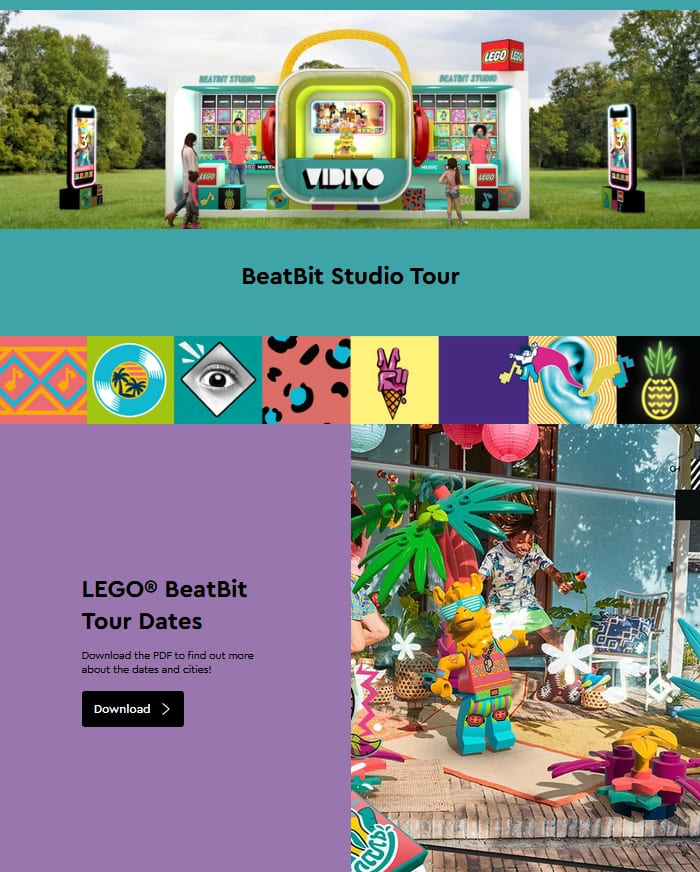
It has been a busy spring for L.L.A.M.A, having featured on Spotify’s New Music Friday in 20 countries and Apple’s New Music Daily in 41 countries and appeared in Rolling Stone, Paper Mag, and People, the DJ followed up with his television debut on both The Voice in the UK and Nickelodeon’s Teen Choice Awards in the US. He finished the month dancing on the steps of the Sydney Opera House with INXS and Baker Boy, filming a video for the band’s global hit single, New Sensation.
HOW LEGO VIDIYO WORKS
Making a VIDIYO creation is easy – download the app, choose the music, scan the LEGO minifigures and BeatBits and see them brought to life through augmented reality, choosing between three different sizes – Mini (4cm), Medium (1.2m) and Mega (5m) for truly dynamic creations. Finally, record your masterpiece and activate the selected BeatBits for an incredible 60-second performance, which can be saved locally in-app to show your friends and family, or trimmed and shared on a fully-moderated, kid-safe social feed!
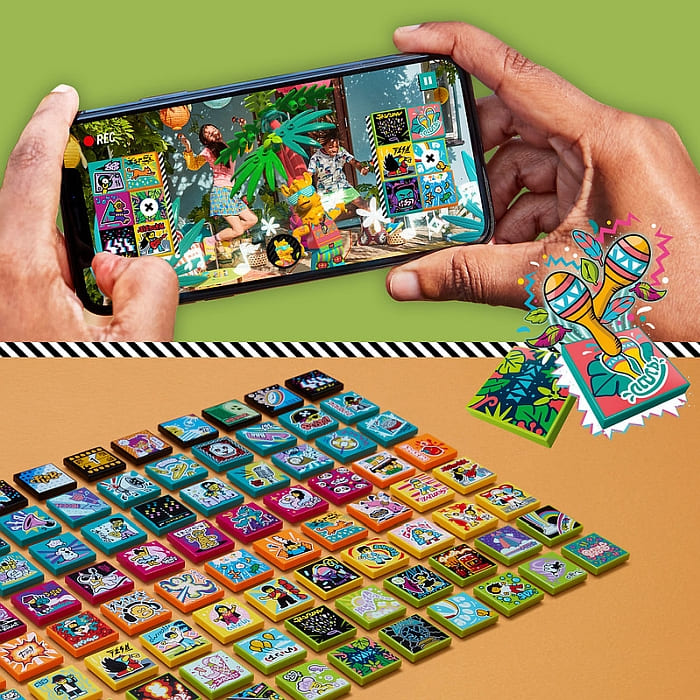
LEGO VIDIYO is aimed at children aged 7 – 10 and provides a safe universe where they can traverse the worlds of physical and digital play. As LEGO VIDIYO requires verified parental consent – along with anonymity – and with external moderation of all content uploaded to the App feed, parents can be reassured their child is unleashing their creativity while staying safe online.
While the first wave of LEGO VIDIYO sets have been praised for their fun and funky minifigs, they are also criticized for the excessively high prices and lack of buildability. Also, the app is limited, clunky, resource hungry, and only works on select high-end phones. The second wave of LEGO VIDYO sets however have been received with much more enthusiasm. The sets are creative, colorful, and include town of interesting parts and building techniques for much more reasonable prices.
Along with the press-release, LEGO also made available some concept art and models from the LEGO designers as they worked on the theme. They look incredibly fun and colorful!
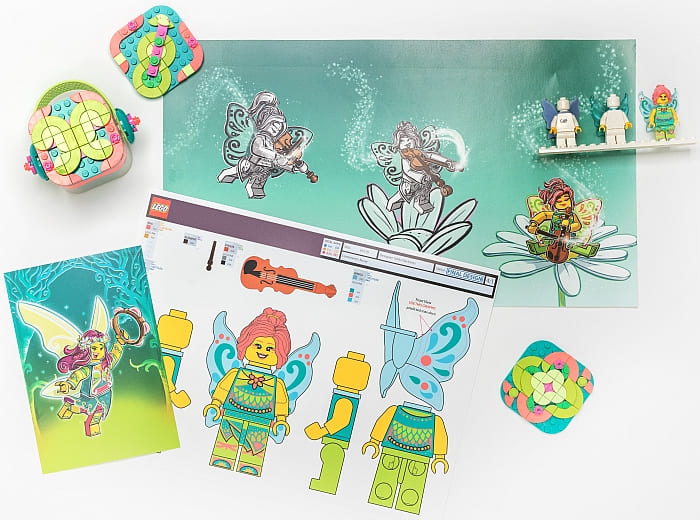

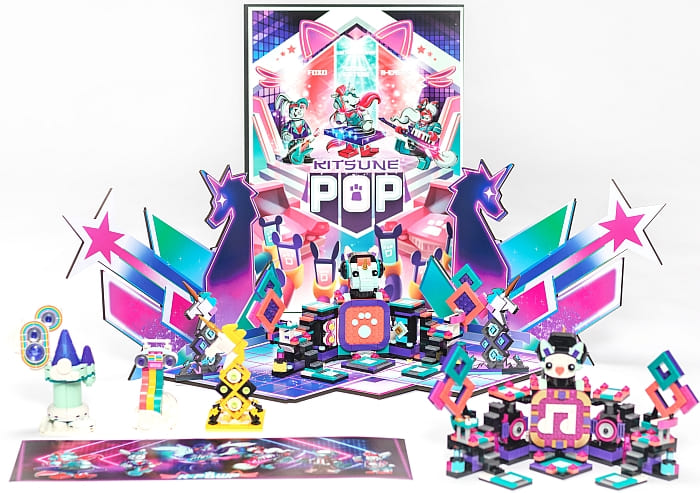


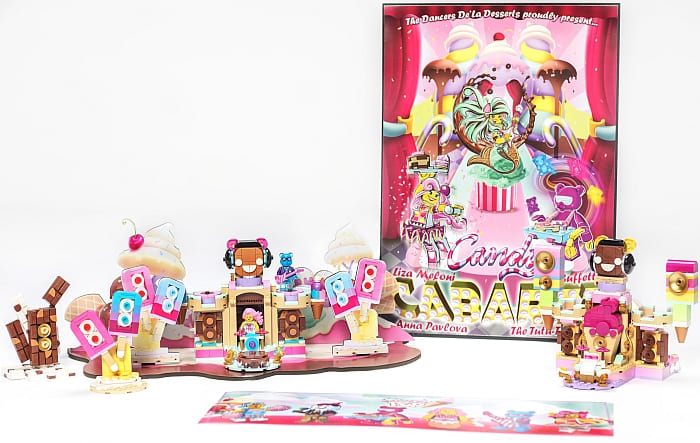
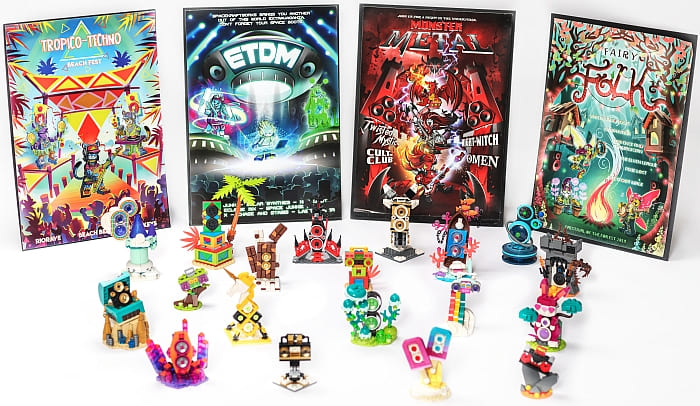

It looks like that with the second wave of sets, LEGO VIDIYO is going to be a lot more mature theme with even more excellent minifigures and new creative and fun building sets. What do you think? Are you looking forward to their release? Feel free to share and discuss in the comment section below!
And you might also like to check out the following related posts:





